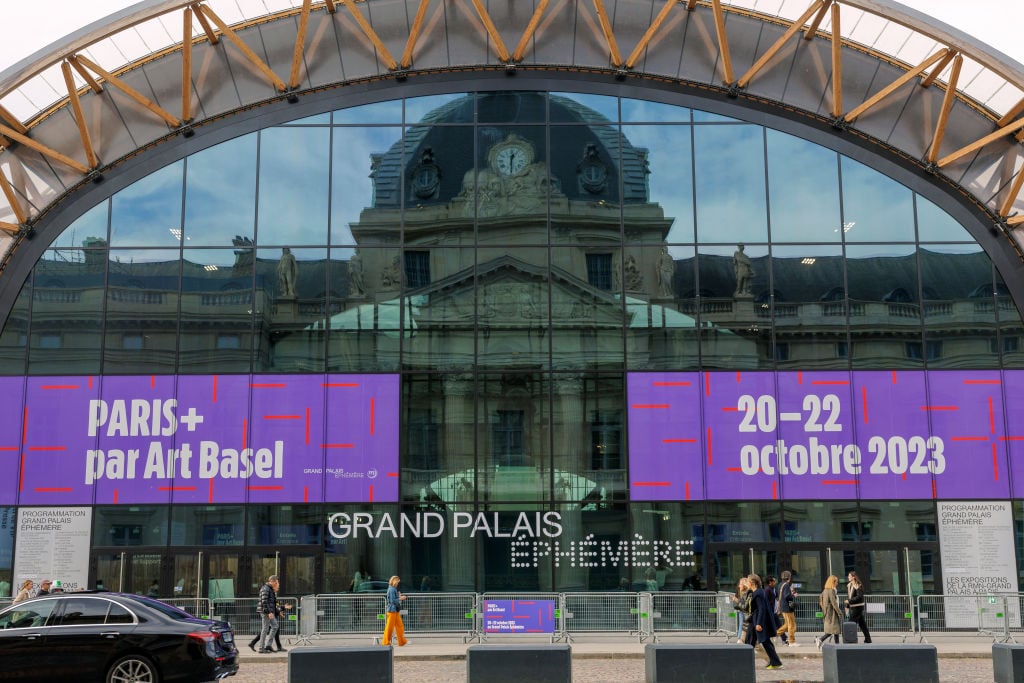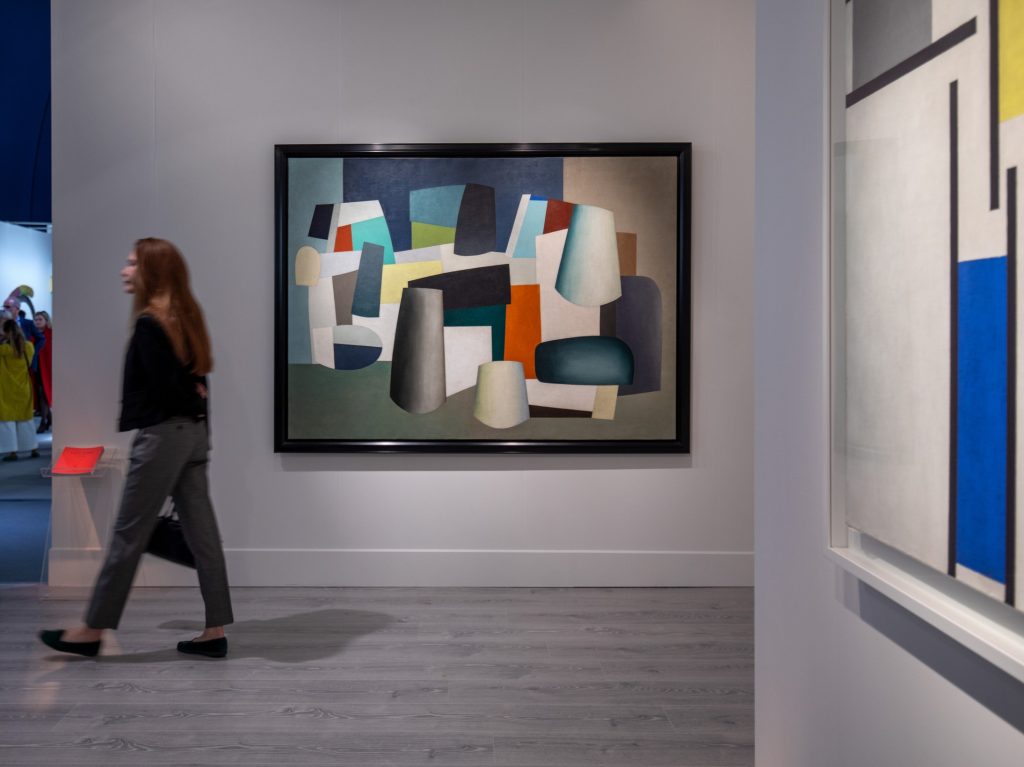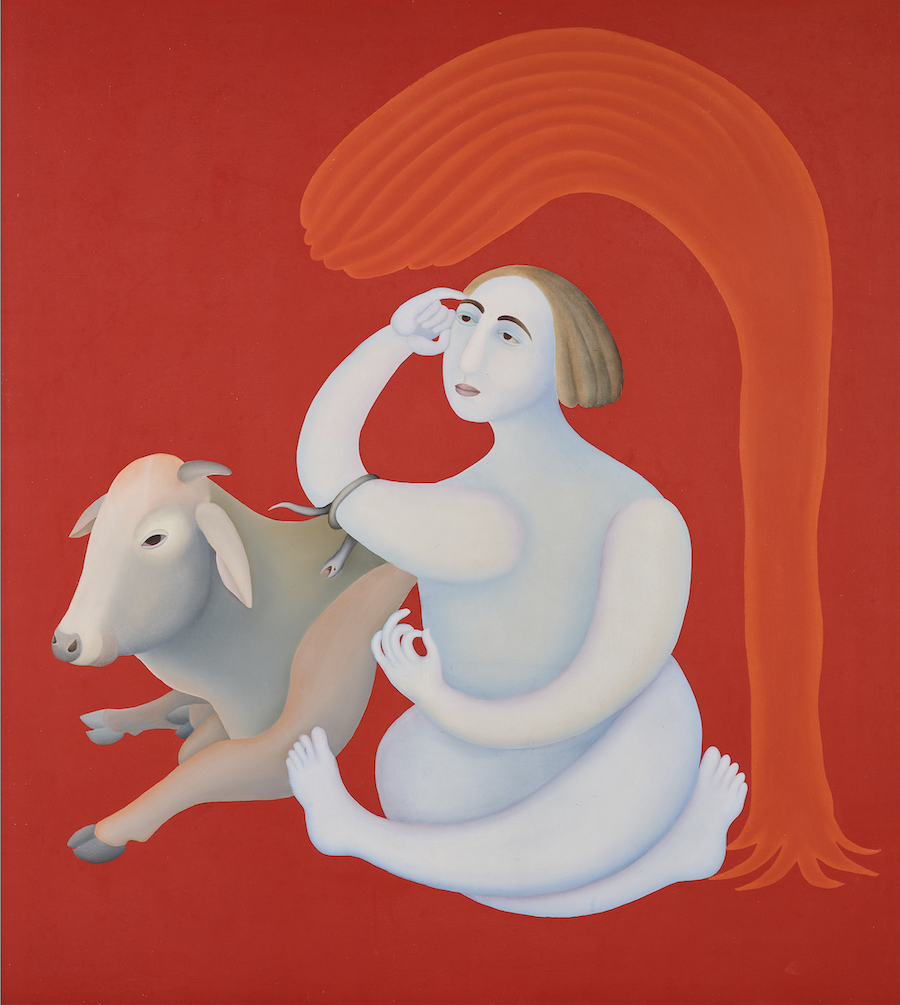The Back Room
The Back Room: Éphémère to Essential
Paris+ wows, the collector turned would-be Senator, a record-breaking depiction of Shiva, and much more.

Paris+ wows, the collector turned would-be Senator, a record-breaking depiction of Shiva, and much more.

Artnet News

Every Friday, Artnet News Pro members get exclusive access to the Back Room, our lively recap funneling only the week’s must-know intel into a nimble read you’ll actually enjoy.
This week in the Back Room: Paris+ wows, the collector turned would-be Senator, a record-breaking depiction of Shiva, and much more—all in a 6-minute read (1,849 words).

Applicat Prazan at Paris + by Art Basel. Courtesy of Paris+ by Art Basel.
The sophomore edition of Art Basel’s Paris + concluded last week—and the ripples of its success in the face of however many headwinds is still being felt. Those include the outlook for the global art fair landscape, where there is a growing question as to whether Paris + could one day unseat its own sister fair over in Switzerland.
The second Paris +—inheritor of the mantle as the City of Lights’ premiere art event from its ousted predecessor FIAC—had much to contend with. As our own Naomi Rea wrote from the ground, diminished novelty, the spectre of bomb threats and worsening news coming out of the Middle East, as well as the fair’s position in a crowded calendar and the tenor of the art market in general, were certainly working against it.
But… in the face of all what we in art land deem adversity (acknowledging that within the larger context of global events, a price correction should not count as such), the fair not only succeeded, it almost (if quietly) trampled expectations. Recall that…
—A $40-million Rothko painting once in the collection of Thomas H. Lee, at Pace’s booth, stole the show. While still unsold at end of play, it left no doubt that the material was on par with that on offer at the behemoth Swiss fair’s flagship edition.
—The top price reported, a $6 million painting by Kerry James Marshall at David Zwirner, bested the $3.2 million high Kasmin secured for a Robert Motherwell at Frieze London, and dealers reported moving inventory at higher price points than they had ever been able to at FIAC.
—As one advisor noted to our reporter, on view at Paris + was “more intellectual, more conceptual work,” proving the fair has begun forging its own identity early on and differentiating itself from competitor fairs.
And, as our columnist Simon de Pury highlights, a variety of globally engaging shows in Paris appeared concurrently, boosting perception and experience in this sentiment-testing moment for the little sister fair—which may prove itself the prettier sister, given time. Consider:
—The city is bigger and can accommodate to a greater number of visitors with high end tastes than Basel, where the global art world has had to suffer price gouging for budget motel rooms for a little too long.
—On the flip side, the Grand Palais Éphèmére is smaller, so there is less wall space to mount inventory—many dealers resorted to erecting multiple walls within their booth to extend the real estate, and were counting on the enduring appeal of the city to encourage commerce across the whole weekend, and not just in the early hours of the vernissage.
When Paris + moves to the real Grand Palais next year, a bigger and more, well, grand setting for a fair, De Pury sees it ascending to become the most globally important art fair.
Whether he is right depends on your definition of important. Paris + certainly may supplant Basel as the more popular fair, drawing some players away but also drawing out new buyers who are more keen on the city by the Seine than the one by the Rhine. That said, size matters, and as cavernous as is the glass cathedral in the 8th arrondissement, it’s difficult to compete with the utilitarian convention center on the Messeplatz, even if your clients are coming through all weekend long. Besides, the Basel fair will always retain the mega clientele keen to benefit from Switzerland’s unique tax advantages, and can survive a diffuse bleed out of the smaller fish without threatening its reputation for facilitating the most important commerce.
We’ve seen how prime real estate seemingly motivated Frieze’s purchase of New York’s Armory Show. It feels like an art-world acknowledgement that you can’t really put too high a price on venue. Post-Covid, the art market has gotten more global than ever, and with commerce conducted via PDFs and online, it is getting more and more convenient not to have to schlep overseas simply to attend an art fair.
Against this backdrop, the localization of experience has become ever more important. For all the talk that the art-fair calendar has become too congested, Paris is just…Paris. It’s a classic place to get engaged and a classic place to buy art. Much as Seoul finds itself novel due to its status as a nouveau Pop-culture capital, Paris is novel because it is an archetypal art city. There’s no putting a price on that—or competing with it.
The latest Wet Paint tracks… the Marfa Invitational’s non-profit status, and Stefan Simchowitz’s political ambitions…
Here’s what made a mark around the industry since last Friday morning…
Art Fairs
Auction Houses
Galleries
Institutions
Tech and Legal News
“[The auction houses’] best tool for boosting supply and pre-sale confidence is becoming less profitable and less persusasive to risk-sharing partners when they most need it to keep their increasingly expensive businesses going.”
—Melanie Gerlis, in an op-ed in The Art Newspaper

Manjit Bawa, Untitled (Shiva) (1995). Image courtesy Sotheby’s.
Date: 1995
Seller: Private collection
Estimate: £700,000 to £900,000 ($850,000 to $1.09 million)
Selling at: Sotheby’s London
Sale date: October 24, 2023
The painting, typical of Bawa’s vivid palette, renders the Hindu deity Shiva in a contemporary setting and was painted in 1995. Shortly after it was made, it was acquired by a private collection that held onto it for nearly three decades before consigning it to the most recent sale, where it soared to a new artist auction record of £1.9 million ($2.3 million) or roughly double the high estimate.
“It was an incredibly exciting moment to see six bidders compete for such an exceptional masterwork by Manjit Bawa, which broke the artist’s record in its first appearance at auction,” said Ishrat Kanga, head of Sotheby’s London modern and contemporary South Asian Art. “This particular painting was created at the pinnacle of Bawa’s career and showcases his unique approach to figuration. It truly captured the attention of so many who had the privilege of seeing it in all its glory in our Mumbai and London exhibitions.” The previous high, of $1.98 million was set at Christie’s New York this past March, for Untitled (Durga) (2004), according to the Artnet Price Database.
—Eileen Kinsella